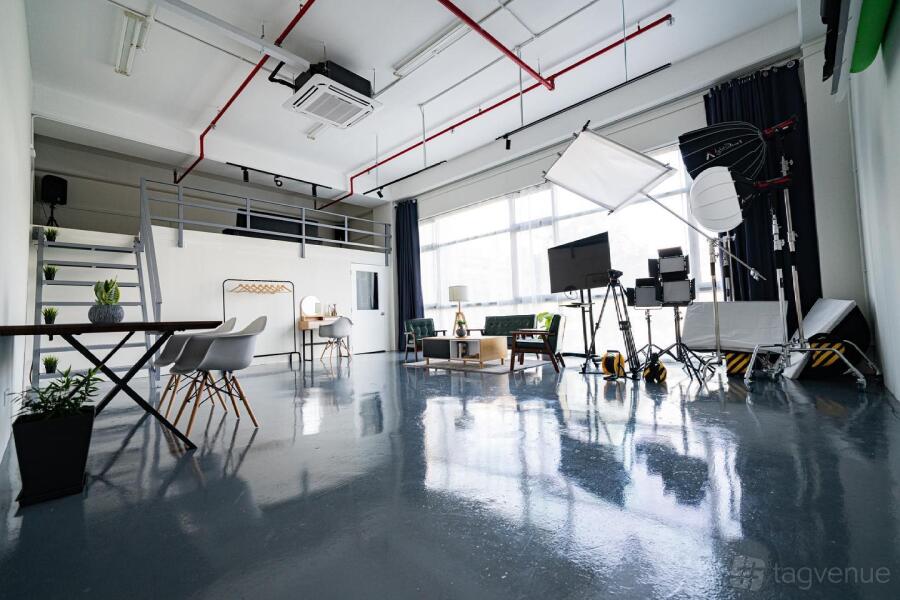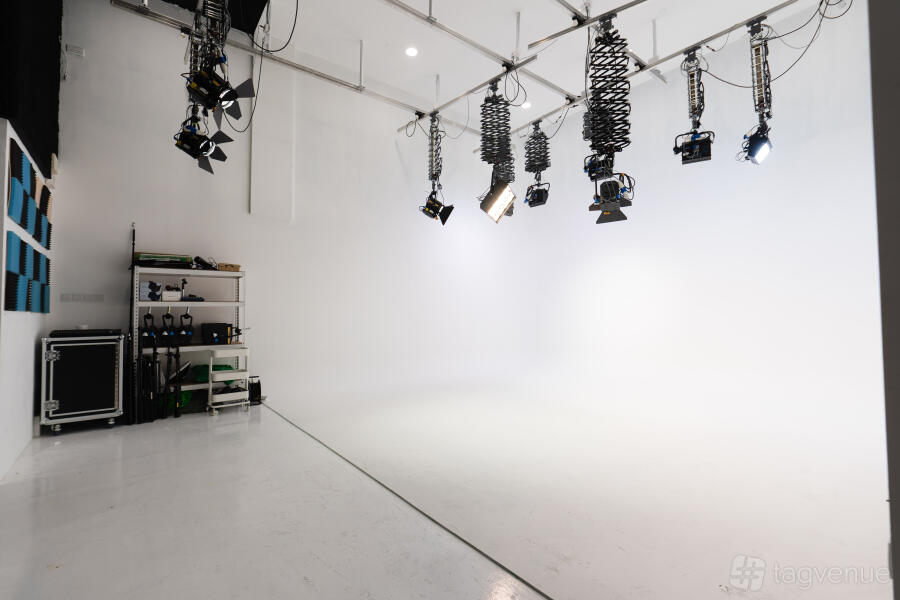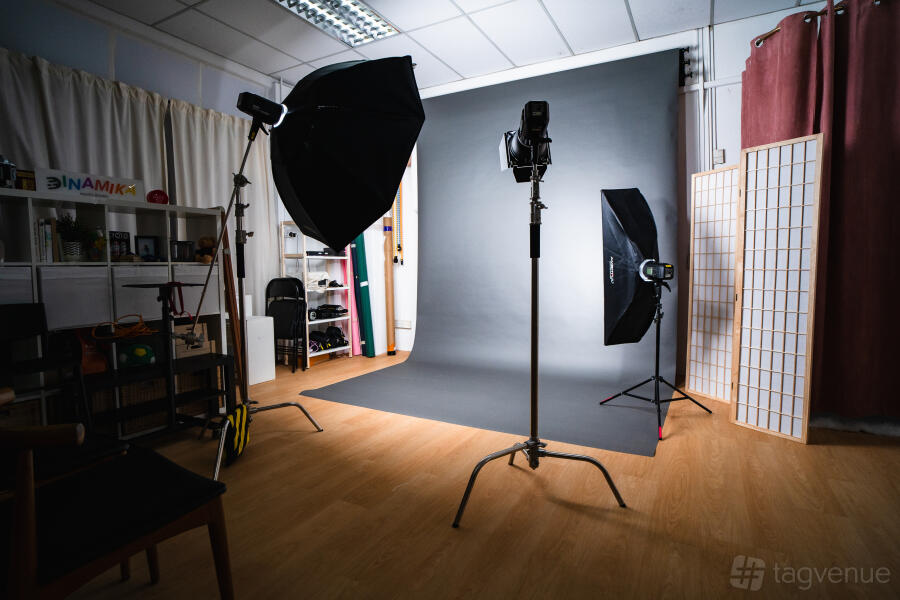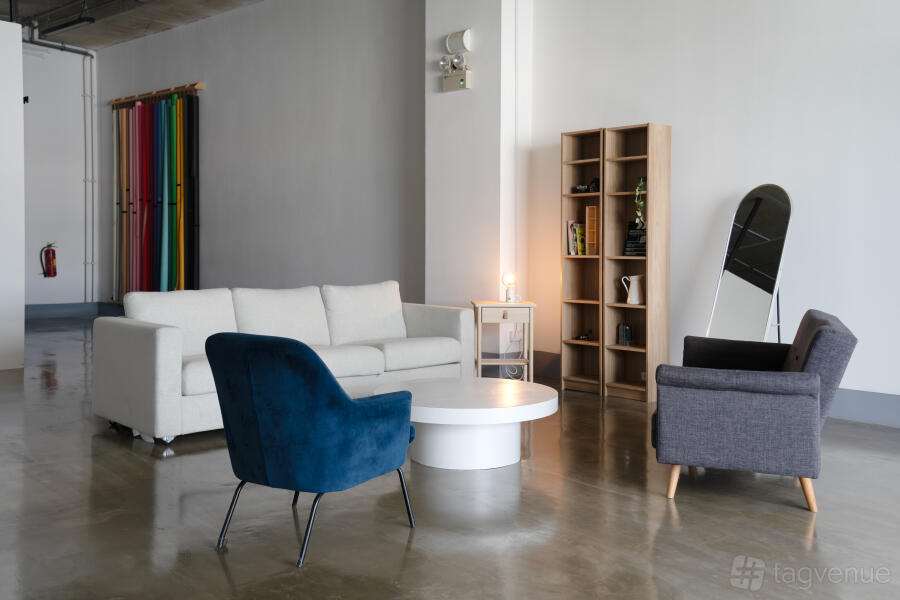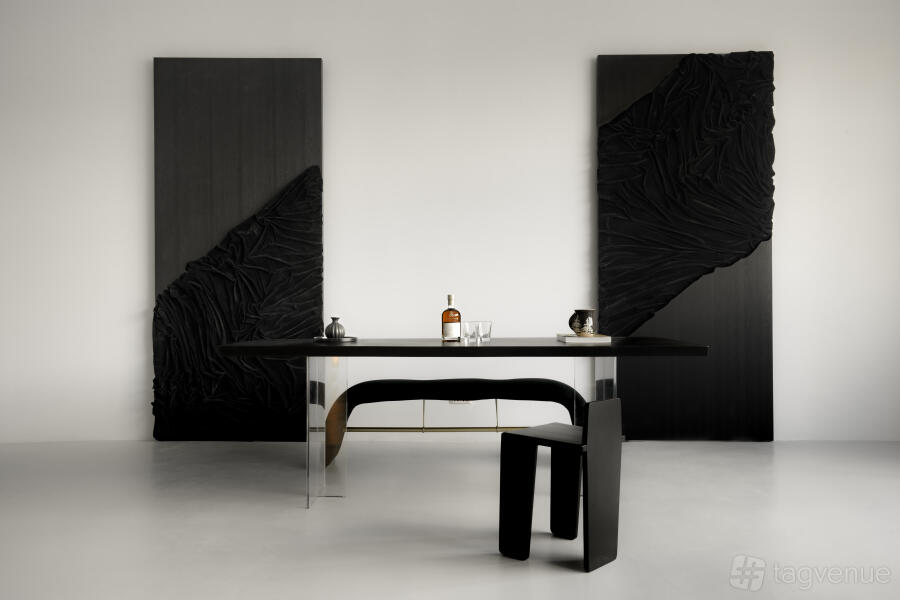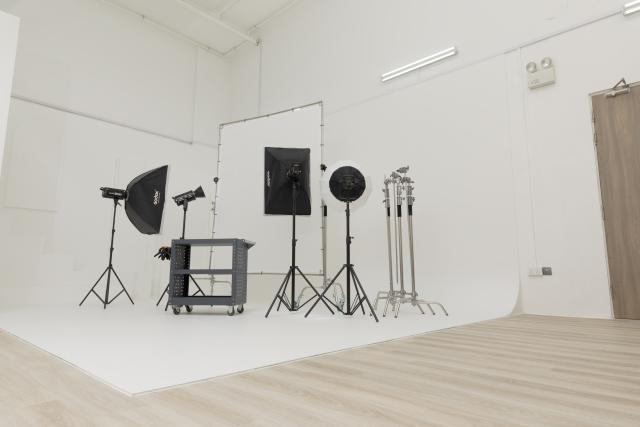Top Daylight Studios in Singapore
If you’re looking for daylight studios for your next photo shoot, you’ve come to the right place! In such a diverse city as Singapore, you will have no problem finding exactly what you need. A 21st-century megacity with strong ties to the past, often also called the “Garden city”, Singapore is a superb location for creative productions. Whether you’re looking for a professional studio with on-site equipment or just a studio for your student project, you won’t be disappointed with options here. Compare prices, photos, and venues using Tagvenue and book your daylight studio today!
-
Cloud Studio
30 guestsThe Studio ClanMattar MRT StationKallang Way, Singapore#Supervenue
MMadison L.
“Ample natural lights shining into the studio and the space is nicely decorated.”from S$80
hire fee / per hour -
Haste Studio
35 guestsThe Studio ClanMacpherson MRT StationKampong Ubi, Singapore#Supervenue
JJoanne
“Is a great place for photoshoot! With natural sunlight , good lighting equipment.”from S$60
hire fee / per hour -
Our Studio Space (Level 1)
20 guestsOur Studio SpaceKembangan, Singapore#Supervenue
HHannah H.
“Staff was super friendly and helpful. The studio is very nice. Cozy and bright. Loved the natural light there.”from S$70
hire fee / per hour -
Studio One
20 guestsVico StudioTai Seng MRT StationJoo Seng, SingaporeSSatisfied U.
“Studio have enough props for photography use and its clean.”from S$80
hire fee / per hour -
Cyclorama Photo Video Studio
25 guestsStudio Five SpacesSembawang MRT StationSembawang Central, Singapore#Supervenue
KKai L.
“The team at Studio Five Spaces made my e-commerce photoshoot an absolute breeze.”from S$45
hire fee / per hour -
Entire Studio
20 guestsDinamika Photo StudioBukit Merah, Singapore#Supervenue
AAdrian H.
“Great little studio for photoshoots”from S$52
hire fee / per hour -
Fallow and Light Studio
20 guestsFallow & LightJalan Besar MRT StationSungei Road, Singapore#Supervenue
NNur A.
“The space is beautiful, with the dreamiest natural light. Everything just felt so calm and inspiring.”from S$65
hire fee / per hour -
The Studio
10 guestsStudio HanaticsMacpherson MRT StationKampong Ubi, Singapore#Supervenue
SStephanie
“Needed the studio for yoga photography, equipment and facilities were well-suited for us. Would book again!”from S$50
hire fee / per hour -
The Kyt Studio
60 guestsThe Kyt StudioSembawang Central, Singapore#Supervenue
AAmanda
“A very nice cosy space for a photoshoot with all the equipment you need!”from S$55
hire fee / per hour -
Studio 1
25 guestsProject 19Mattar MRT StationKallang Way, Singapore#Supervenue
PPui E.
“Lovely space for our family photoshoot, with good natural light all around.”from S$80
hire fee / per hour -
Genteel
40 guestsPaperCut StudiosAng Mo Kio MRT StationAng Mo Kio Town Centre, Singapore#Supervenue
AAshrielle N.
“Studio was exactly as per picture and the host was really gracious. Thanks for having us at this space.”from S$75
hire fee / per hour -
The Studio
15 guestsH2 StudioUpper Thomson, Singapore#Supervenue
KK.tan
“Im very glad to book the studio from him. Place was clean and neat”from S$45
hire fee / per hour
- 1
- 2
- 3
- 4
Budget
Event Type
Area type
Venue type
Accessibility features

FAQs about Top Daylight Studios in Singapore
Daylight studios in Singapore are usually similarly priced to normal photo studios in the area. This means that their price can start from around $30 per hour and go up to $100 per hour. This of course varies from space to space and the final price will depend on the size of the venue, for how long you would like to rent it as well as the equipment included in the price, such as the background or tripods.
Photo studios that also have natural light are scattered all around Singapore, whether it would be in the Northern, Central or Eastern region, so you are able to pick one that is the most accessible for you. The Central Area of the city-state has a wide variety of daylight studios, including the Rochor district. On the east, the Geylang and Kampong Ubi districts are also hubs of photo studios that fit your criteria. The Yishun and the Sembawang districts on the north are also great locations for photo studios.
A daylight studio must be equipped with tall or big windows so that as much natural light as possible can come in. See-through curtains, for dimming the light if it gets too strong, should also be hung in the studio. Other than that, daylight studios are as equipped as any other studios. Basic equipment should consist of reflectors and softboxes to modify the lighting. Backdrops and a cyclorama should also be on hand to enable you to create more diverse photoshoots or films. Tripods and ladders are likely to be provided and may come in handy to mount any additional gear.
Your Guide to Renting Daylight Studios in Singapore
A daylight studio is an incredible place for creating any visual media where light plays a key role. You may use the light as it is, play with see-through blinds to soften it, create shadows, and manipulate them in any way you want. For professionals, a daylight studio is an exciting place to play with light and use it in innovative ways to bring various visions to life. For beginner photographers, natural light is one of the greatest photographic skills to master and attempting shots in a daylight studio is sure to be a rewarding experience.
But what if you run into a brick wall and cannot continue creating? Even with the perfect studio, a creative block may put your project on hold. Don’t worry, we’ve composed a list of tips to help you overcome it!
Take a break. That may sound horrible, especially with a deadline looming, but giving yourself a break might be the best solution. It doesn't have to be long, just pause for a moment, and look at your project from afar. Stop wracking your head over it and let yourself think about something else. Chances are when you come back to your work you will have a fresh view and new energy to work again.
Go outside. Breath in the fresh air and let the oxygen do its magical work. Go somewhere familiar or to a place you have never been before. You may see something that will spark a new thought and renew your creativity.
Do physical activity. Go for a walk, do a few jumping jacks, put on your favourite music and dance. While you flex your physical muscles, let your creative ones relax. Moving your body in a way you enjoy will also improve your mood, helping you overcome that block.
Do a repetitive task. Let your mind focus on something monotonous, and take a break from the creative work. Your brain will stop fixating on your project and relax, making room for new ideas to come in. Even if it’s not anything related to the project, at least you have washed the dishes, checking one box off your to-do list.
Do something unusual. Make your brain work in a way it has never worked before. Allow it to create new connections. What you decide to do doesn’t have to be related to your project, it’s even best when it’s not. Make your mind step out of its well-worn patterns and let the creativity flow back to you.
Browse your old projects. Look at where your creativity has already taken you. Get inspired by yourself! Maybe you will remember an old idea that you never got to work on and it will bring added value to the project you’re working on.
Get inspired by others. Go to an exhibition of a big artist. Browse social media for smaller ones. If you’re working on a commercial project look at what has already been done in this area. It’s not about comparing yourself and your work with others, it’s about learning from them.
Overcome the empty space. If you’re sitting in front of your laptop or notebook and struggling to write down any idea at all, just start writing the first word that comes to your mind. Then another associated one. And then another one. Juxtapositioning different words may result in something fresh and new. Filling up the space with words will let you overcome the fear that you can’t come up with anything.
Entertain every idea you have. Don’t despise any of your ideas just because they might not be good enough. They may seem small and uninteresting at first, but work on them, and see if you can make them better. By working on something you didn’t like at first you will either come up with something new and more suitable for your project or the initial idea will grow into a breakthrough.
Seek advice. If you’re really struggling and nothing works you may want to go and talk to somebody with greater experience than you. Look for an artist or professional in your area, or look for somebody online. Search for forums or online platforms where you can share your struggles with others. Don’t be afraid to ask for a piece of advice.
Do a project for yourself. Is there a project you always wanted to do but never really had time for it? It’s the perfect moment to bring it back. Do it for yourself, just for the fun of it. Let your creativity come back to you for you, not for a work project.
Don’t stress over it. Creative blocks happen to everyone working in a creative field. Yes, you have a project to deliver, but biting your nails over it won’t do you and your project any good. Give yourself time and compassion and you will come back to creating in no time!

